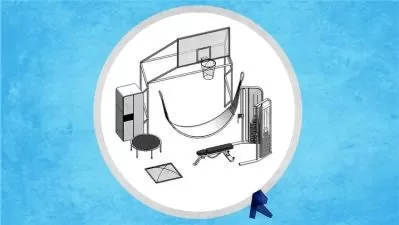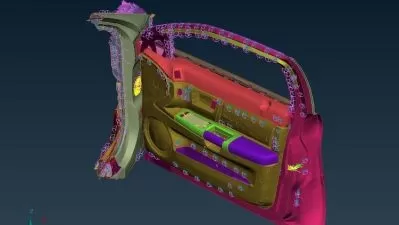Engineering Mechanics One (Statics)
Andrew Zulu
8:23:42
Description
master the principles and applications of bodies in static equilibrium
What You'll Learn?
- Illustrate and animate statics principles using Geogebra
- Perform operations on vectors and vector products such as dot, cross and triple products
- Calculate force components; resultants; equivalent systems; moments of forces and couples both in 2D and 3D
- Calculate the equilibrium condition for particles and rigid bodies both in 2D and 3D and solution by free-body diagrams
- Analyze structurally plane trusses using both the method of joints and method of sections; and analyze members for frames and machines
- Apply equilibrium principles to dry friction problems; including tipping and sliding
- Determine the centroids / centers of mass for solids and the centroids of lengths, areas and volumes by integration and by the method of composite bodies
- Determine the second moments of area (area moments of inertia) by integration and for composite bodies
Who is this for?
What You Need to Know?
More details
DescriptionStatics is a branch of mechanics that deals with the effects of loads (forces and moments) on bodies at rest or not experiencing an acceleration. When the body is under acceleration, the study is called dynamics. Mechanics is a science that deals with the effects of loads on bodies in general. Statics is foundational to the understanding of other mechanics courses such as dynamics, mechanics of materials, fluid mechanics, and mechanics of machines.
Why is this course unique? The course is unique because it emphasizes building intuition to grasp the concepts. The course has a focus of demystifying concepts that freshman engineering students find hard to grasp. Hands-on exercises are a great way to learn what has been covered. Videos are great to grasp the concepts quickly but they are not enough. The real learning happens when you get your hands "dirty". I would highly recommend that all exercises or quizzes be completed and not skipped. "I hear and I forget. I see and I remember. I do and I understand." (attributed to Confucius).
Recommended textbook: Most experts would agree that the pedagogical approach in the classic textbook "Engineering Mechanics Statics' by Meriam is outstanding! This book is not necessarily required for this course but would be a great extra to have.
Who this course is for:
- Freshman (first-year) or sophomore (second-year) engineering university students taking the statics class
- Practicing engineers who want to brush up on statics
- Anyone with a hunger for mechanics to open their minds
Statics is a branch of mechanics that deals with the effects of loads (forces and moments) on bodies at rest or not experiencing an acceleration. When the body is under acceleration, the study is called dynamics. Mechanics is a science that deals with the effects of loads on bodies in general. Statics is foundational to the understanding of other mechanics courses such as dynamics, mechanics of materials, fluid mechanics, and mechanics of machines.
Why is this course unique? The course is unique because it emphasizes building intuition to grasp the concepts. The course has a focus of demystifying concepts that freshman engineering students find hard to grasp. Hands-on exercises are a great way to learn what has been covered. Videos are great to grasp the concepts quickly but they are not enough. The real learning happens when you get your hands "dirty". I would highly recommend that all exercises or quizzes be completed and not skipped. "I hear and I forget. I see and I remember. I do and I understand." (attributed to Confucius).
Recommended textbook: Most experts would agree that the pedagogical approach in the classic textbook "Engineering Mechanics Statics' by Meriam is outstanding! This book is not necessarily required for this course but would be a great extra to have.
Who this course is for:
- Freshman (first-year) or sophomore (second-year) engineering university students taking the statics class
- Practicing engineers who want to brush up on statics
- Anyone with a hunger for mechanics to open their minds
User Reviews
Rating
Andrew Zulu
Instructor's Courses
Udemy
View courses Udemy- language english
- Training sessions 87
- duration 8:23:42
- Release Date 2022/12/06










